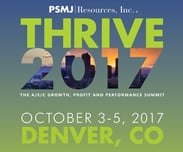 In June of 1976, the Financial Accounting Standards Board (FASB) released FAS 13 – Accounting for Leases. After years of deliberation, the FASB finalized changes to the accounting rules February 26, 2016. The new rules will increase transparency in lease accounting by bringing operating leases onto the balance sheet.
In June of 1976, the Financial Accounting Standards Board (FASB) released FAS 13 – Accounting for Leases. After years of deliberation, the FASB finalized changes to the accounting rules February 26, 2016. The new rules will increase transparency in lease accounting by bringing operating leases onto the balance sheet.
Still a Two-Lease Model
Under the new guidelines, equipment lease transactions historically categorized as either “capital” or “operating” will be defined as “finance” or “operating.”
Determining whether a contract is a finance or operating lease will be virtually the same as the current framework.
Little Change in Finance Leases
Presentation for financing leases will only change slightly from the prior model. The accounting is virtually the same as the capital lease model; however, the capitalized asset (now referred to as a “right-of-use” asset) will be presented separately from other assets, and the related liability will be presented separately from other liabilities on the balance sheet.
New Model Favors Operating Leases
Operating leases will now appear on the balance sheet for the first time. Due to the residual investment by the leasing company and the discount rate, the balance sheet amounts will be lower than they would when financed with traditional debt.
Similar to the finance lease, the present value of operating lease payments will be recorded as a right-to-use asset on the balance sheet, separately from other assets, with an equal and offsetting lease liability presented from other liabilities.
However, due to the residual investment by the leasing company and the discount rate, the balance sheet amounts (ROU and liability) will be lower than the amounts capitalized when financed with traditional debt. This asset and liability will generally be reduced to the present value of the remaining lease payments. This adjustment will not impact equity or earnings.
Good News for Government Contractors
Unlike previous drafts, operating lease payments will continue to be presented as a single item on the income statement. There will be no interest component of operating lease payments. This is good news for government contractors who were being faced with a potentially unallowable interest component in the contracts with government agencies.
$0 Additional Debt on Balance Sheet
The operating lease liability will be reported as a component of “other liabilities” and not with traditional debt. Firms will recognize the value of a right-to-use asset on the balance sheet, and will also book a corresponding liability for the minimum lease payments, discounted at the rate implicit in the lease or the lessee’s incremental borrowing rate.
Stronger ROA
The net result is that leasing, compared to borrowing to buy, will continue to result in a better ROA.
$0 Impact on Income Statement
Income statement treatment will remain the same. Under the new rules, operating lease payments will continue to be expensed straight-line (as rent expense). This method continues to be favorable compared to debt financing, where computed interest has a large front-end impact.
Debt Limit Covenants
Since “other liabilities” are generally excluded from debt limit covenant calculations, the accounting change should not adversely impact bank debt covenants. Operating leases will continue to help most firms avoid bank covenant violations.
Low Costs and Asset Management
Organizations will continue to receive the benefits of leasing, including lower monthly payments, thanks to the leasing company’s residual investment. The present value of operating lease obligations will still be lower than the cost of buying the equipment outright. Technology exchange options and lease-based refresh programs remain as powerful financial tools to manage assets and avoid technological obsolescence.
This blog post has been prepared for informational purposes only. Please consult your auditor for confirmation and discuss covenants with banks and creditors. First American does not provide tax, legal or accounting advice.
About the Authors:
 Scott Hursh,CPA is Managing Partner, Stambaugh Ness Architectural and Engineering Industry Group. He is recognized as a leading professional in financial management, tax and government contract consulting for architectural and engineering firms. He is highly experienced in the application and interpretation of the Federal Acquisition Regulation (FAR), the AASHTO Audit Guide and the Cost Accounting Standards (CAS). In addition, he has helped companies to minimize their tax obligations using prudent deferral strategies, timely elections and often overlooked credits and deductions.
Scott Hursh,CPA is Managing Partner, Stambaugh Ness Architectural and Engineering Industry Group. He is recognized as a leading professional in financial management, tax and government contract consulting for architectural and engineering firms. He is highly experienced in the application and interpretation of the Federal Acquisition Regulation (FAR), the AASHTO Audit Guide and the Cost Accounting Standards (CAS). In addition, he has helped companies to minimize their tax obligations using prudent deferral strategies, timely elections and often overlooked credits and deductions.

Nick Baxter, CLFP works exclusively with A|E|C firms to develop strategic lease and financing solutions for technology, leasehold improvements, and other capital equipment purchases. Nick is a Certified Lease and Finance Professional (CLFP), and joined First American Equipment Finance, in 2011 after graduating Phi Beta Kappa from the University at Buffalo with a degree in economics. He is currently pursuing his MBA from the Simon Business School at the University of Rochester.
First American Equipment Finance provides equipment leasing and financing to A|E|C firms nationwide.

First American Equipment Finance is a Silver sponsor of PSMJ's THRIVE 2017 taking place October 3-5 in Denver. Are you ready for two high-energy days of inspiration, networking, and fun? THRIVE 2017 is your chance to learn, to network, and to get an eye-opening perspective on what the world’s most successful A/E/C firms are doing right now to thrive. This unique annual event attracts senior-level executives from a wide range of A/E/C organizations located around the world. Registration is now open!



